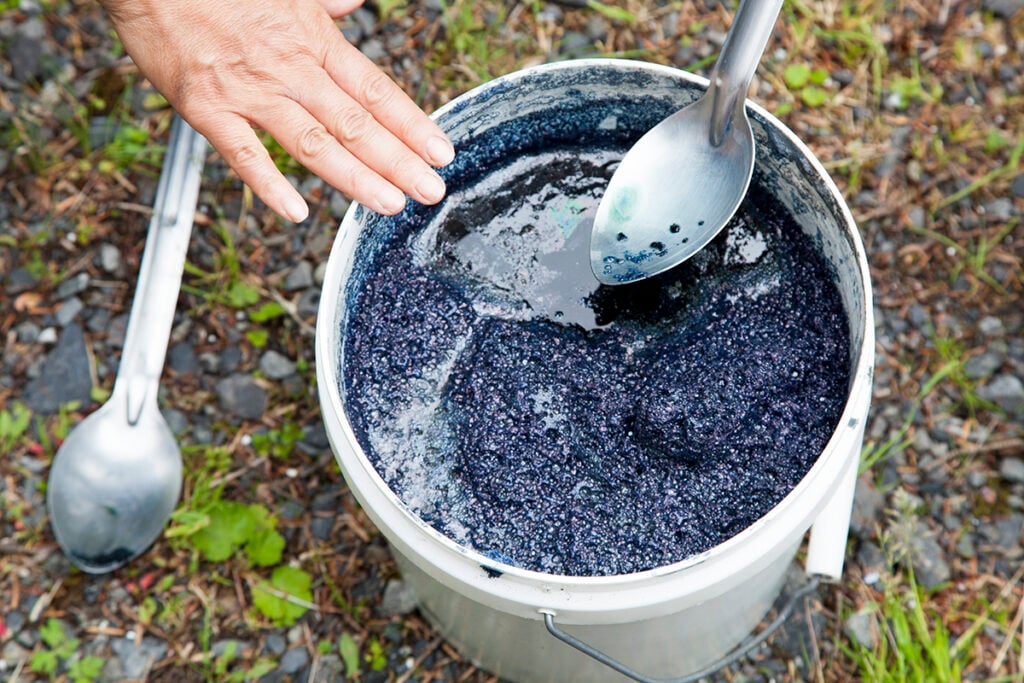
We get lots of emails from customers about challenges with dyeing and needing Botanical Colors’ President Kathy Hattori’s help. Why not share the learning so we can all benefit? From our inboxes to you, it’s simple: You Asked, Kathy Answered. Email questions@botanicalcolors with your plea for help!
YOU ASKED: I’m trying to set up my indigo vat finally (I purchased materials from your store months back). My only confusion is whether or not I need to purchase a stainless pot to do the initial 180-190 degree temperature rise? I don’t have one, and have a 5 gallon bucket I was planning to do this first fructose vat in, but I think I want to actually set up a 15 gallon vat in the future. It would be very helpful to understand the best materials to start with since I am in a rural area and sourcing things will be more difficult for me. What I mean is stainless vs. enamel vs. plastic vat, bucket blanket heater vs. a stove, some major decisions.
KATHY ANSWERED: The only reason we use a pot is to heat the water, but you can also boil water on the stove. You can use any type of pot that you would boil water in for this purpose. If you don’t have a large pot, you can heat smaller pots and combine them. You only need to have hot water to mix the indigo ingredients to pour them into the plastic bucket or barrel. You can use a kitchen stove, an outdoor propane burner, or an electric teapot to boil that water.
You don’t need to make a vat in a stainless or enamel pot because we don’t heat the vat above 100F. We use a bucket heater, which is used to heat 5-gallon plastic buckets, and even that is optional.
I think the confusion is that you are thinking that the indigo vat needs to be maintained at a hot temperature. It does not. The hot water is only to “dissolve” and mix the ingredients to add them to the vat, and then fill the vat with hot water, then let it cool. When you start dipping in the cool vat, it is possible to warm the vat but it is not a requirement. To warm the vat we use a bucket heater that will work in a plastic bucket and heat it to about 100-105F. Sometimes a little warmth will help kickstart an old vat, but if you have a fresh vat, it’s not required.
Also, other types of indigo vats (like fermentation vats), need constant warmth and that’s where all the additional warming equipment comes in. For a 1-2-3 type vat, this is not necessary.
